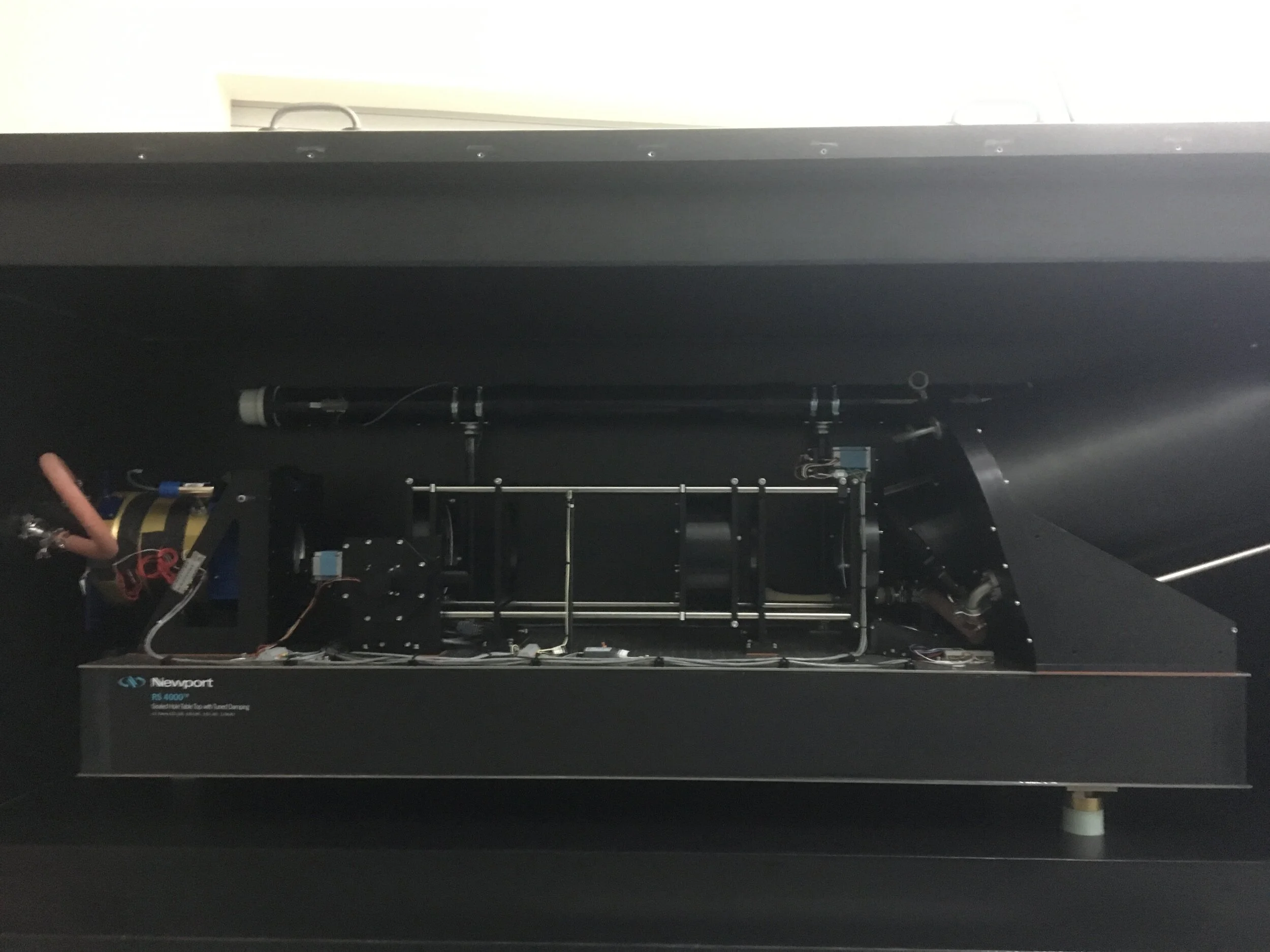PFS
As a postdoc, I joined the Planet Finder Spectrograph at Magellan II/Clay (PIs: Stephen Shectman and Jeff Crane), and I have continued with the team as a Staff Scientist. The California-Carnegie Planet Search represents one of the largest, longest-running ground-based exoplanet search in history. Dr. Paul Butler of Carnegie pioneered the precision Doppler velocity technique of planet detection -- measuring the wobble of a star caused by the gravitational attraction of an orbiting object, from which the mass and orbital period can be derive -- in the early 1990's, and has since helped discover or confirm over 300 exoplanets. In 2010, the Carnegie Planet Finder Spectrograph was commissioned on the 6.5m Magellan Clay telescope at Las Campanas Observatory in Chile, where Carnegie has a 50% share of telescope time. The purpose of PFS is to use high-precision RV measurements to monitor ~500 of the closest (<100 pc) least-active FGKM stars to find terrestrial-mass planets, hopefully some of which are in habitable zones where liquid water could exist on the surface. These targets are most amenable to future follow-up observations with large ground- or space-based telescopes. PFS uses the traditional iodine cell techinque to imprint known spectral features in each stellar spectrum, providing a simultaneous solution for the wavelength scale, point spread function, and Doppler shift of the star. Most of our observations pre-2017 were taken through a 0.5’’ slit and R~76,000, and span wavelengths from the Ca H&K lines at 3968A and 3933A to a bit beyond H-alpha at 6562A. We upgraded the PFS detector in 2017/18 and also started using the 0.3’’ as our default, increasing the resolving power to almost 130,000. You can read more about my PFS observing and instrumentation adventures, including a day-by-day account of upgrade, at Las Campanas Belles.
PFS was the first American RV spectrograph to achieve 1 m/s precision, and on very quiet (not magnetically active) stars it has reached ∼0.6 m/s, putting it on par with HARPS planet search capabilities (e.g., Lovis et al. 2005). With its current precision, and the cadence that the Carnegie team obtains with 4-5 ten-night runs/year, PFS is able to detect terrestrial mass habitable planets (at 0.1-0.2 AU) around M dwarfs, which experience greater gravitational effects of smaller planets, and have closer-in habitable zones. Recent PFS detections include a system with three habitable super-Earths (Anglada-Escude et al. 2013), a system with one sub-Saturn mass and one super-Earth mass planet (Arriagada et al. 2013), and two super-Earth mass planets, one of which is in the habitable zone, around Kapteyn’s star (Anglada-Escude et al. 2014), one of the oldest and closest exoplanet systems discovered to date. Plus there's the long period, giant planets we detected with PFS alone in 2016! PFS observations also contribute to confirmation of transiting planet candidates and mass measurements of planets detected via transit (e.g., Dai et al. 2015; Hartman et al. 2015; Jordan et al. 2014; Zhou et al. 2014; Van Eylen et al. 2016).
Me helping to fix some suspicious valves and install a new fan in PFS in April 2016. Also pictured is Jeff Crane, instrument co-PI. Check out our time lapse video here!
New CCD installed (left side, gold container)! From February 4, 2018.
Jeff and me draining the liquid coolant (pink stuff) from part of the temperature control system.


